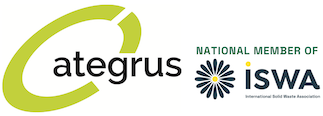Fuente: EEA, https://www.eea.europa.eu
Artículo publicado el 06 de enero de 2023
From source to sea — The untold story of marine litter
«We’ve all seen the photos. Piles of plastic waste drifting in the open sea. A daily tide of plastic and other detritus washed up on our beaches. Scenes of turtles and fish tangled in discarded fishing nets. Yet all of it is preventable. This web report traces the problem of marine litter from source to sea to help policymakers and citizens understand what we can do about it.»
«Key messages
- Marine litter is defined as all human-made solid items that end up in the coastal or marine environment. The major cause is poor waste management and littering on land, although seaborne activities contribute to the problem.
- Land-based sources account for 80% of marine litter and approximately 85% of it is plastic. This is a big problem because of plastic’s impact on marine life and human health via the food chain. The persistent nature of plastic means that it can last up to 500 years in some cases.
- Plastic packaging and small plastic items comprise nearly 80% of plastic waste and are prevalent on European beaches. Although the amount of waste continues to increase, current waste management capacity is limited. Most plastic items that are used and thrown away are either recycled, incinerated or properly stored in waste facilities. However, a mismanaged part of that waste continues to pollute our seas.
- The waste that cannot be collected or properly managed eventually leaks into the environment and is carried to the seas by rivers. The outcome is that 75% of assessed marine areas are polluted.
- European plastic waste generation is growing at an even faster pace than economic growth. Continuous increasing waste generation is not in line with the EU’s goal of significantly preventing waste and reducing plastic waste.
- The EU zero pollution action plan, circular economy action plan (including its plastics strategy), Marine Strategy Framework Directive and Single-Use Plastic Directive all aim to curb the problem. Yet to achieve Europe’s green goals, we need a more holistic understanding of marine litter — from source to sea.
- The EEA identifies 10 recommendations at the end of this report to help policymakers and other stakeholders tackle the marine litter problem.
»
«(…)»
El artículo completo y todos los detalles se pueden encontrar aquí: https://www.eea.europa.eu/publications/european-marine-litter-assessment/from-source-to-sea-the
Se podrá descargar el briefing «Marine litter in Europe: an integrated assessment from source to sea» en el enlace: https://www.eionet.europa.eu/etcs/etc-icm/products/etc-icm-reports/etc-icm-report-5-2022

